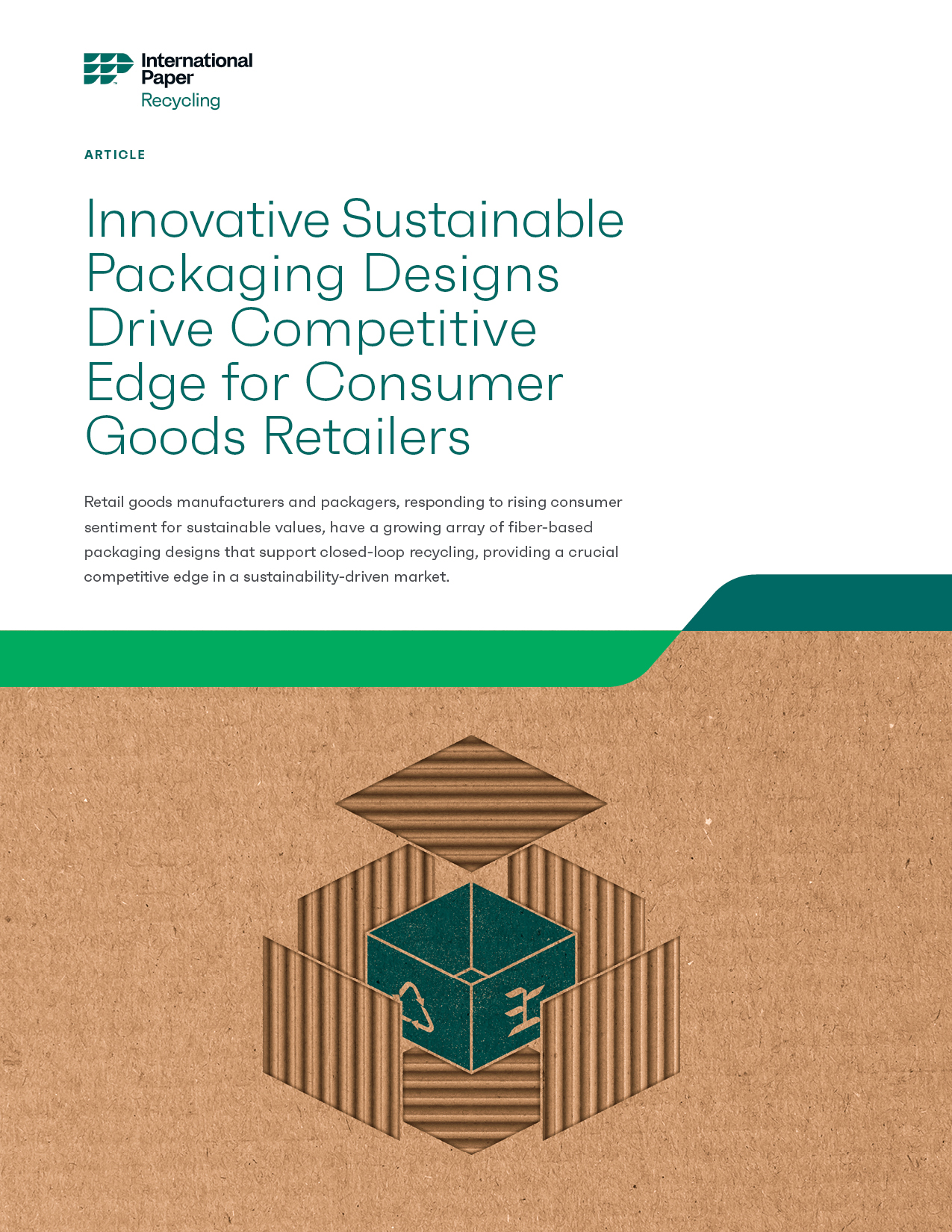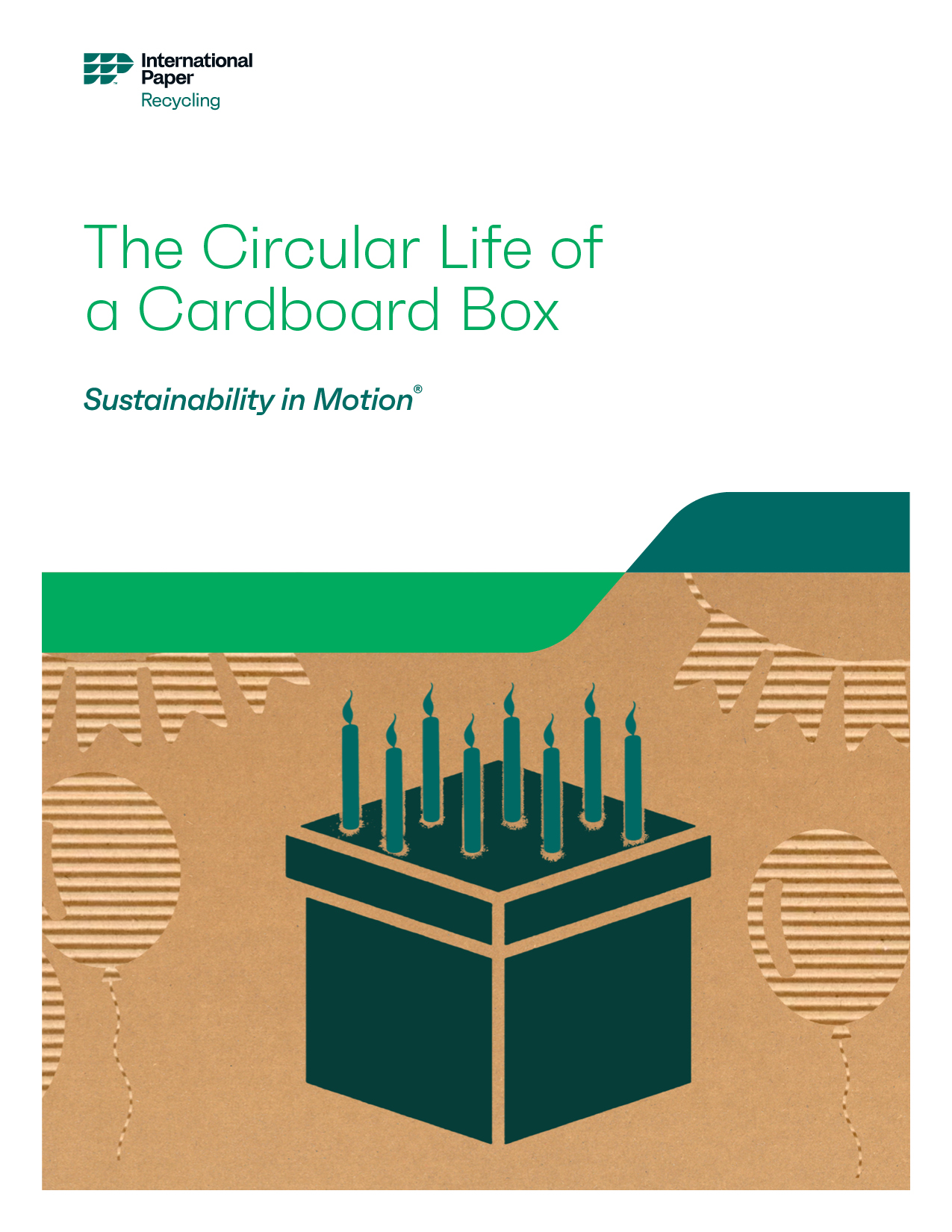Last year, Mars Wrigley, one of the top dozen global brands in candy and snacks, began piloting recyclable paper-wrapped Mars bars. “The trial will achieve a significant reduction in plastic on the physical Mars bar,” the company said. This move by the Chicago-based sweetsmaker whose popular candy brands include Dove, M&Ms, Snickers and pet foods Pedigree and Whiskas reflects two major trends among consumer products goods manufacturers: a move from plastics and a response to a changing consumer landscape that increasingly factors sustainability in purchase decisions. "In the world we want tomorrow, no packaging becomes waste,” said Qing Qi, VP R&D global innovation, Mars Snacking.

As U.S. Millennial (born 1981 to 1996) and Gen Z (1997 to 2012) consumers reach predominance in the marketplace—each group now outspends Boomers. U.S. consumer surveys are reflecting their preferences for sustainably made and packaged products. This trend is showing up in shopping baskets, both virtual and brick-and-mortar. National Retail Federation surveys show this extends to the primary packaging and the containers that consumer product goods (CPG) are shipped in.
Millennials and Gen Z express the most significant interest in sustainability. This matters because the preferences of these ascendant consumer groups, with dominant buying power, will drive marketing decisions across the spectrum of the supply chain.
Among online grocery buyers, 37 percent of shoppers overall say they will pay a premium for products made and packaged sustainably. Such buyer sustainability concerns are leading brand owners like Amazon, Walmart, Google and IKEA along with other retailers, grocers, wholesalers, e-commerce firms and packaging converters to re-evaluate their packaging strategies. And they are retooling to satisfy this new market reality. Walmart, for example, says it will eliminate polystyrene and PVC and shift to recyclable, reusable or compostable packaging for all private label brands next year.
Commercial buyers of packaging are likewise shifting preferences in packaging, driven in some cases by internal corporate requirements to reduce environmental impact, and compliance with a wave of regulations banning plastic packaging.
That’s fueling a new look at recyclable fiber and paper-based alternatives, made possible by innovations in packaging designs, materials and even retailer shipping practices. Also in the mix: revisiting packaging materials that were replaced by plastic in the 1960s. Consequently, corrugated and cardboard containers, well established as the most recycled packaging, are the immediately available alternative to many plastic packages.

Fiber-based packaging also offers a key advantage: it can conveniently enter the waste recovery stream at commercial packaging and shipping operations that contract with responsible suppliers of waste recovery services such as International Paper Recycling. An additional benefit is that sustainable fiber-based packages are easily recycled curbside in the residential stream, with wide accessibility throughout the U.S.
Design and performance are key considerations packagers face in transitioning from plastic to sustainable fiber-based packaging. First, any new designs must fit into existing automated package filling lines, from infeed to sealing. Second, particularly in foods, fiber-based packaging products must have comparable performance to plastics when it comes to sealing moisture in or out—maintaining freshness in salty snacks, for example; or in food serving containers.
Among the most significant trends is using less packaging altogether. This is made possible through advances in materials, equipment and package design. Developments now available include:
- corrugated containers automatically custom-sized in-line
- snap-together boxes that use sturdy self-locking flaps, eliminating tape or staples, and even glue
- advances in corrugated container coatings that eliminate the need for plastic liners such as IP’s ClimaShield® product.
- paper-based recyclable flexible packaging that replaces plastic films
- fiber-based beverage pack carriers that replace plastic
- inline digital printing systems that customize packages and eliminate overruns and obsolete inventory
What innovative materials are being used for eco-friendly packaging? Let’s look at some fiber-based packaging products, with applications in a variety of sectors: food and beverage, electronics, pharmaceuticals, retailing, shipping and manufactured goods.

1 https://www.afandpa.org/news/2024/paper-industry-announces-2023-us-paper-recycling-rates-using-updated-methodology

Cardboard Beverage Pack Carriers
Plastic beverage pack carriers, which entered the market in the 1960s, are notoriously harmful to aquatic life. Even degradable versions still contribute to the microplastic pollution in oceans and waterways. Coca-Cola, PepsiCo, AB InBev, Molson Coors, Grupo Modelo and several other of the world’s largest beverage companies have announced plans to replace plastic beverage rings with fiber-based alternatives. Recyclable fiber-based versions are available now, which can be used in machine applicators at bottling plants as well as recycled curbside by end consumers. earthrings.com

Extruded Heat-Sealable Coated Paper Film
Plastic films used inside cereal boxes and snack foods are one of the most pervasive forms of plastic packaging and wholly unrecyclable. A fiber-based alternative to such flexible films, Preserve®, has been introduced by PrintPack for wrapping granola bars and salty snacks. Made of 85 percent paper with a layer of extruded polyethylene, it has heat seal and cold seal functionality with a range of barrier and performance characteristics said to make it suitable for frozen foods, vertical-form-fill-seal applications (such as nut snack packs) and other dry food applications such as baking mixes, tea and coffee. Importantly, it has passed testing protocols for repulpability and recyclability.
Glassine: What’s Old is New Again
This supercalendered paper is translucent and super strong. Glassine is a smooth and glossy paper made from wood pulp. Free from coatings, glassine can be easily recycled and is naturally biodegradable. Printable and readily convertible, glassine can be manufactured pH neutral, acid-free, and resistant to moisture, air and grease, making it a great alternative to plastic packaging. In the mid-20th century, potato chips were packaged in glassine bags, an application pioneered by Herman Lay, whose Lay’s Chips is now part of PepsiCo’s Frito-Lay division.

Top-Sealable Punnets—Instead of Plastic Produce Trays
The fresh produce department of grocery stores are permeated with plastic containers, packed with fresh fruits and vegetables. Before their long-term environmental and health issues were identified, plastic containers came to dominate these sections. But improved versions of fiber-based fresh produce containers—molded pulp, coated cardboard—are poised to reclaim this segment. Instead of plastic trays, produce wholesalers and packers are opting for fiber-based, top sealable punnets, such as EarthCycle’s molded fiber punnets and International Paper’s MaxNest.™ IP’s MaxNest™ product solutions also automate erection of the punnets from die cut blanks. They nest more compactly than plastic alternatives and are top sealable (seal at the top) with conventional films.
Digitally Printed-on-Demand Containers
As a corrugated and linerboard manufacturer, International Paper will install a digital press on your packaging line, capable of four colors plus white, in several sizes and configurations. For certain applications, digital printing allows packagers to eliminate the preprinted box, eliminating print held in inventory and avoiding waste when branding or design changes.

Sized-to-fit Cardboard Shipping Containers
Less is more in packaging. Amazon, which has been carefully calculating shipping box sizes to reduce costs, is taking it even further: “We reduce packaging by certifying products that can ship safely without an Amazon box, envelope or bag,” the company said, and now ships some goods, such as dog food, in primary packaging. Amazon is encouraging its suppliers to use packaging designs that can withstand the rigors of shipping. Amazon also converted its massive Euclid, OH distribution center to a completely plastics-free operation. It reengineered a plastics wrapping machine to use cardboard wrappers that are stretchable and heat sealable.
“Our plan is to take the testing that we are doing here and then apply that to other fulfillment centers to transition from plastics to curbside recyclable paper,” says Pat Linder, VP, Mechatronics and Sustainable Packaging at Amazon. “By converting to paper we can help all our customers recycle all their packaging right at home, right at their curbside.”
Machines already on the market make size-to-fit cardboard containers available to any packager or brand owner, with substrates tailored to the devices. And with International Paper's eBos™, retailers who ship a variable mix of products via small parcel carriers have access to our team of eBos™ experts to analyze your shipment history and box utilization, then recommend a suite of boxes to match your needs.
Last Two Steps to Sustainable Packaging
Replacing plastic packaging with fiber-based cardboard and corrugated materials provides sustainability credibility with consumers, giving a competitive edge in a changing marketplace. But that’s only true if the circle is closed through recycling, not if it ends up in a landfill. What makes fiber packaging truly sustainable is not just that it can be recycled, but also that it is made from renewable resources. When it comes to recycling, brand owners and packaging businesses need a trustworthy recycling partner to close the loop and send packaging waste back to mills to be converted to new packaging, making it part of a circular supply chain.
Two steps are required: First, consumer products, goods manufacturers and packagers can contract with a packaging manufacturer that is also a recycler of manufacturing and packaging waste. And second, by choosing fiber-based packaging that is curbside recyclable by the end user, closing the loop on circularity.
International Paper fosters numerous initiatives across packaging/recycling supply chains, with closed-loop circular solutions that include a national network of waste recovery partners and a large number of recycling facilities strategically placed across North America for the recycling of fiber-based packaging solutions.






